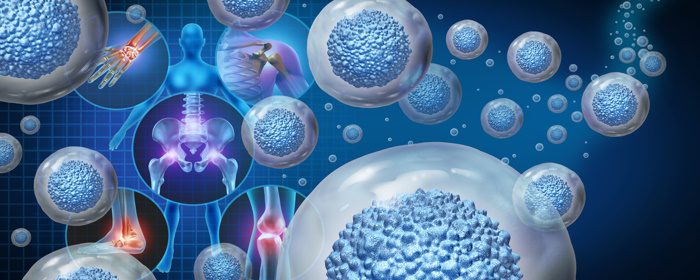Osteoarthritis (OA) is the most common form of arthritis and affects an estimated 25% of adults in the United States. Characterized by pain, stiffness, and inflammation in the joints of the body, OA is most frequently observed in the knees, hands, hips, and spine.
OA is one of the leading causes of disability with an annual cost of medical care and lost earnings exceeding $300 billion. With over 250 million people affected by OA worldwide, the combination of aging, obesity, and increased incidents of oxidative stress is causing the condition to become increasingly prevalent.
To date, treatment and medical interventions – including exercise, physical therapy, lifestyle modifications, and prescription and over-the-counter medications – have been successful in managing symptoms, reducing pain, and maintaining joint mobility, but have not been able to promote the regeneration of degenerated tissue.
Stem cells, and specifically mesenchymal stem cells (MSCs), have been identified as a potential therapy option for OA. In this review, Zhu et al. summarize the pathogenesis and treatment of OA and review the current status of MSCs as a potential treatment option for the condition.
In reviewing the pathogenesis of OA, the authors highlighted the fact that OA is a dynamic and progressive degenerative disease that is primarily caused by the imbalance between restoration and destruction of the joints; the disease is also significantly influenced by environmental, inflammatory, and metabolic aspects.
The authors highlight that the primary goals of current OA treatment methods are to reduce pain, slow progression, and preserve and improve joint mobility and function.
As researchers continue to search for therapies that encourage the regeneration of damaged articular cartilage and the alleviation of inflammation, they’ve turned their attention to a number of stem cell-based therapies, such as autologous chondrocyte implantation (ACI). While ACI has received FDA approval, unexpected dedifferentiation, and joint invasiveness during harvest limit the availability and usefulness of this application.
Fortunately, MSCs have not been found to demonstrate limitations similar to those observed in ACI and are considered novel therapeutic agents for the treatment of OA. Prized primarily for their ability to stimulate cartilage formation and for their vascularization, anti-inflammation, and immunoregulation, MSCs are sourced from different types of stem cells, including bone marrow (BM-MSCs), adipose tissue (AD-MSCs), and umbilical cord (UC-MSCs). Zhu et al. summarize the characteristics, advantages, and disadvantages of each of these MSC sources in this review.
The authors point out that several clinical trials have proven both the safety and potential efficacy of BM-MSCs, AD-MSCs, and UC-MSCs in the treatment of OA. However, the authors also point out that several of these trials were conducted with limited samples, without rigorous controls, and with relatively short-term follow-up. Considering this, Zhu et al. call for additional clinical trials using larger samples, more rigorous controls, and additional long-term follow-up. In addition, the authors also call for additional considerations to further enhance the efficacy in clinical trials, including cell density, time and location for MSC transplantation, and pretreatment of MSCs by inflammatory cytokines.
The authors conclude that while stem cell-based therapy, and specifically MSCs, demonstrate great potential for the regeneration of new cartilage and strong immunoregulatory capacity, the identified limitations and risks of MSC-based therapy should be realized and treated carefully.
Despite the identified risks and limitations, MSC-based therapy for the treatment of OA might achieve better efficacy in regenerative medicine, especially when administered in combination with other treatment options.
Source: “Mesenchymal stem cells in osteoarthritis therapy: a review – NCBI.” 15 Feb. 2021, https://www.ncbi.nlm.nih.gov/pmc/articles/PMC7868850/.


 St. Petersburg, Florida
St. Petersburg, Florida
